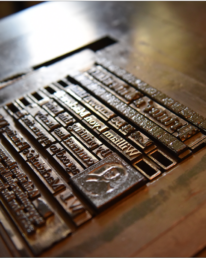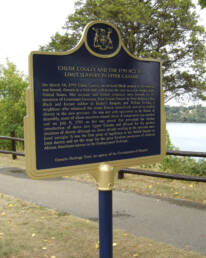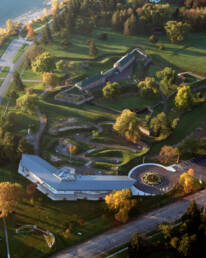January 25, 2023 | Photo courtesy of Destination Ontario
Niagara Black History Tour
Traveling along the Niagara River offers a vast and stunning experience of nature. The River is quite a sight, often presenting an alluring teal blue colour as it stretches 58 km between Lake Erie and the spectacular Niagara Falls. The River’s extensive journey marks the border between the United States of America and Canada.
Many tourists to Niagara Falls may be unaware of how Black communities have shaped this region for centuries. The area served as the Underground Railroad for many who followed the route seeking freedom in the mid-19th century. During the War of 1812, this is where British colonies’ allies, which included Black and Indigenous soldiers, battled with the United States of America.
Day One - Niagara-on-the-Lake
MORNINGQUEENSTON HEIGHTS AND THE MACKENZIE PRINTERY
WAR OF 1812 AND THE UNDERGROUND RAILROAD
Follow the Niagara River for a journey into the extensive Black history of the borderlands. Explore Queenston Heights, a lovely park on the Niagara escarpment. Here, you can find the memorials dedicated to the War of 1812, when British colonies in North America defended themselves from the United States of America. Visit the Coloured Corps War of 1812 heritage plaque, which is dedicated to the Black soldiers who fought with the British allies, and the Landscape of Nations Memorial, commemorating the Indigenous soldiers who also fought in the war.
Follow the North Star with Niagara Bound Tours to learn about the migration of Black American slaves coming to Canada. They’ll invite you to join a caravan tour to view the underground railroad. Listen to and learn from the impactful stories about escape from slavery.
Next, make your way to Queenston, a little village in the valley, and stop at Mackenzie Printery. This newspaper museum printed the Act Against Slavery in 1793, a first step in the gradual abolition of slavery in Canada.
AFTERNOONNIAGARA-ON-THE-LAKE
BLACK HISTORY THROUGH ART
As you venture through Niagara-on-the Lake, keep an eye out for the memorial plaque to Chloe Cooley. It was her resistance that prompted the Act Against Slavery in the late 1800s. You can also take part in a self-guided walking tour (a handy app is available) as you wander around the Voices of Freedom Park. A series of art installations teach visitors about the history of Black people in the area, including those who were enslaved, Black loyalists, those who sought freedom, and free Blacks. As you make your way through the park, you’re reminded about the often-unacknowledged contributions Black settlers made in developing the area.
As you explore Niagara-on-the-Lake, there are plenty of restaurants and patios to choose from. After lunch, if the weather is warm, why not take a horse-driven carriage ride around the area? It’s a special way to soak in the essence of this popular strip.
AFTERNOONWILLIAM SUSANNAH STEWARD HOUSE, NEGRO BURIAL GROUND AND FORT GEORGE
AN AFTERNOON OF HISTORY AND HERITAGE
In the afternoon, head over to the William and Susannah Steward House (a viewing-only site). William Steward was African American and a community leader. Nearby you’ll find the Negro Burial Ground – a graveyard at the Niagara Baptist Church where members of the Black community worshiped.
Alternatively, you can pay a visit to Fort George, the home of the Coloured Corps, which is open seasonally. Step inside the fort’s restored buildings to see what life was like for soldiers in the 1800s. In the summer you’ll find re-enactments, costumed guides, and marching bands. Before you leave, be sure to pause at the Niagara River beside the fort.
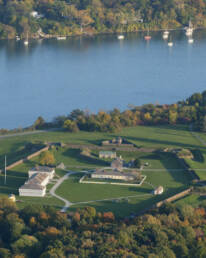
EVENINGFIRST ONTARIO PERFORMING ARTS CENTRE
ENTERTAINMENT IN THE CITY
Once you’re done exploring Niagara-On-The-Lake, make your way to St. Catharine’s for an evening of entertainment. The First Ontario Performing Arts Centre is known for blues, jazz and rock concerts, comedy stand-ups and even local movie screenings.
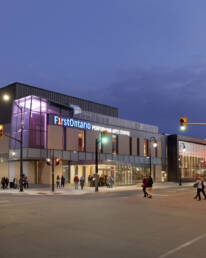
Day Two - St. Catharines
MORNINGST. CATHARINES FARMERS MARKET AND SALEM CHAPEL
HARRIET TUBMAN’S TOWN
Make an early start to the day with a trip to the St. Catharines’ farmers market, (open seasonally). Power up with local coffee and nibble on homegrown produce and freshly baked pastries as you stroll and seek souvenirs.
Harriet Tubman is the most famous resident of St. Catharines. You can find her pew in the Salem Chapel in the British Methodist Episcopal Church. This local museum has many tales of Tubman and the Underground Railroad (make sure to call ahead and book a guide). After the tour, extend your afternoon with a stroll around Richard Pierpoint Park – named after a Black hero of the War of 1812.
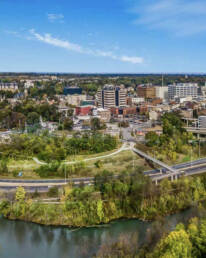
AFTERNOONCARIBBEAN EATS, ST. CATHARINES MUSEUM AND WELLAND CANALS CENTRE
DIG IN – TO LUNCH AND HISTORY
For lunch, why not check out some of the local Caribbean cafés and restaurants? These include the Caribbean Eatery, Island Spice Take Out and JamRock Irie Jerk, which features Jamaican dishes like slow-cooked oxtail, jerk chicken breast meal, and curry chicken roti.
After lunch, head out to the St. Catharines Museum and Welland Canals Centre. The temporary exhibit Last Stop: In their Own Words, provides a look at the experience of the Black community in St. Catharines as told in their own words, and as they navigated their new lives in Canada. The viewing Lock 3 platform will provide an up-close view of ships as they lock through the Welland Ship Canal.

EVENINGFORT ERIE
BEACH PROMENADE AND BATTLE REENACTMENTS
Fort Erie is a quaint hamlet at the south end of the Niagara River. Start with a visit to Waverly Beach Park and discover an amazing view of the Buffalo, USA skyline. Stroll the shores of Erie Beach Amusement Park which has a series of heritage plaques about the hotel and its role in forming the American Civil Rights movement in 1905. It was the forerunner to the National Association for the Advancement of Colored People (NAACP).
Old Fort Erie is a historically rich spot where visitors can view battle sites from the War of 1812. There’s a museum nearby that offers education and context on the war itself. In the summer you can watch scores of re-enactors as they play out specific battles, which include Black and Indigenous troops who were crucial in defending the British colonies. Just down the road is Freedom Park. This small and quiet park is the site of a former ferry terminal and memorial to the Black people who crossed over here for freedom.
End the day with some food at any of the waterfront cafés and restaurants at Crystal Beach – or further along at Port Colborne.
WANT TO TAKE A DETOUR?
CYCLING ALONG NIAGARA’S NATURE TRAILS
You can do this entire tour on a bicycle by traveling along the Niagara Recreational Trail. The paved trail is mostly along the Niagara River, with a few sections on quiet side roads. The Niagara bike trail joins up with the Welland Canal Trail, which offers another safe and quiet route along the water.
YOUR TRIP AT A GLANCE
YOUR TRIP AT A GLANCE
This guide represents a weekend-long experience, highlighting one of the many wonderful destinations in the area. To suggest a destination for a future guide, please contact us.
All editorial decisions were made at the sole discretion of Ontario Culture Days staff. Jacqueline Scott, Ramona Leitao, Keira Park and Kaitlyn Patience contributed to this culture guide.


